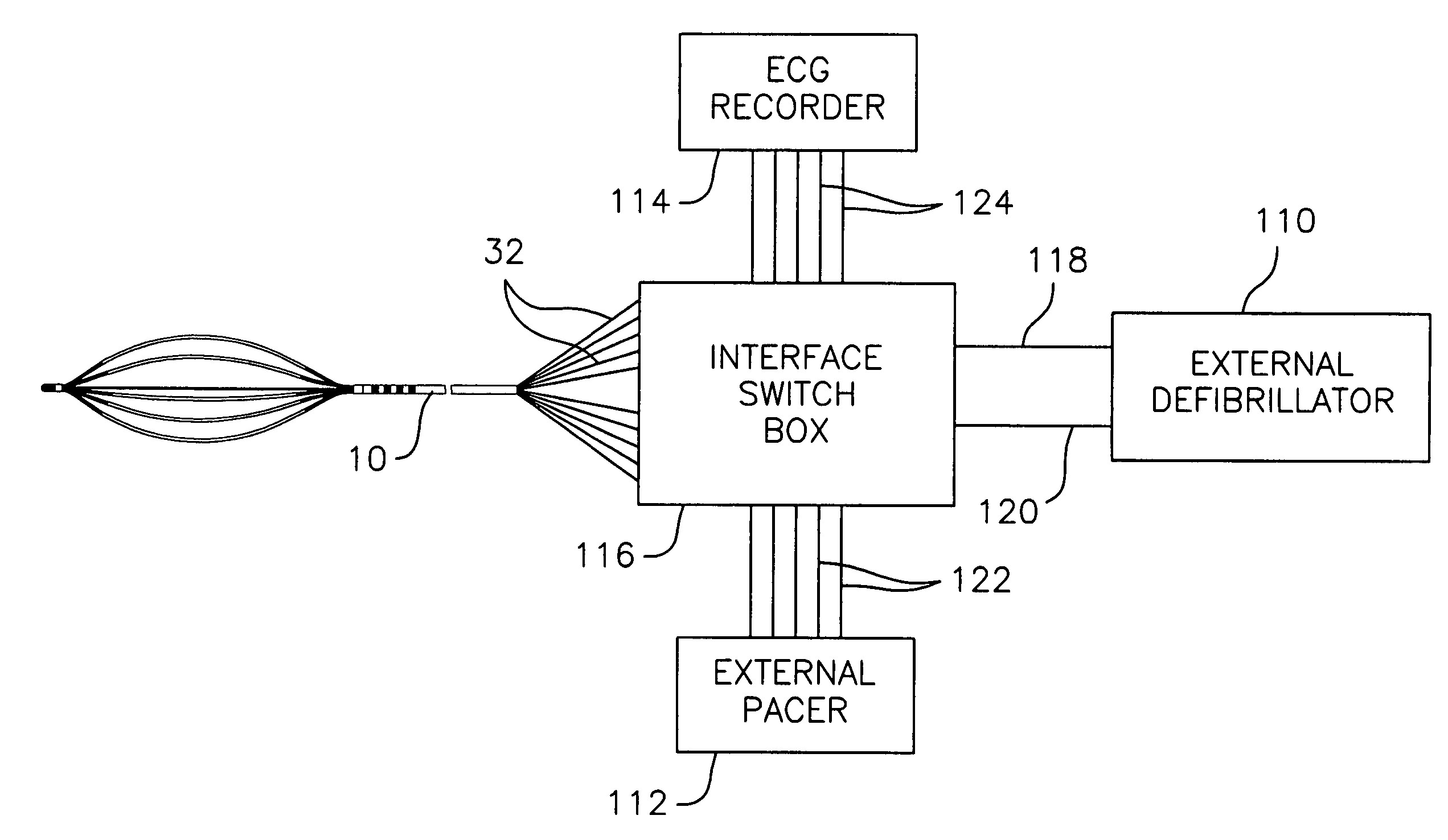Method and system for atrial defibrillation
a technology of atrial fibrillation and atrial fibrillation, which is applied in the field of atrial fibrillation methods and systems, can solve the problems of clotted blood dislodge, pooling and sometimes clots, and inability to properly pump the upper chamber, so as to reduce impedance and energy requirements, improve current distribution, and increase surface area
- Summary
- Abstract
- Description
- Claims
- Application Information
AI Technical Summary
Benefits of technology
Problems solved by technology
Method used
Image
Examples
Embodiment Construction
[0020] The invention is directed to a method and system for atrial defibrillation using a catheter having a basket-shaped electrode array at its distal end. As shown in FIG. 1, the catheter 10 comprises an elongated catheter body 12 having proximal and distal ends, a connector 15 and a control handle 16 at the proximal end of the catheter body, and a basket-shaped electrode assembly 18 mounted at the distal end of the catheter body 12.
[0021] In accordance with the invention, the catheter body 12 comprises an elongated tubular construction having a single, axial or central lumen (not shown), but can optionally have multiple lumens if desired. The catheter body 12 is flexible, i.e., bendable, but substantially non-compressible along its length. The catheter body 12 can be of any suitable construction and made of any suitable material. A presently preferred construction comprises an outer wall made of polyurethane or PEBAX® (polyether block amide). The outer wall comprises an imbedded...
PUM
 Login to View More
Login to View More Abstract
Description
Claims
Application Information
 Login to View More
Login to View More - R&D
- Intellectual Property
- Life Sciences
- Materials
- Tech Scout
- Unparalleled Data Quality
- Higher Quality Content
- 60% Fewer Hallucinations
Browse by: Latest US Patents, China's latest patents, Technical Efficacy Thesaurus, Application Domain, Technology Topic, Popular Technical Reports.
© 2025 PatSnap. All rights reserved.Legal|Privacy policy|Modern Slavery Act Transparency Statement|Sitemap|About US| Contact US: help@patsnap.com



